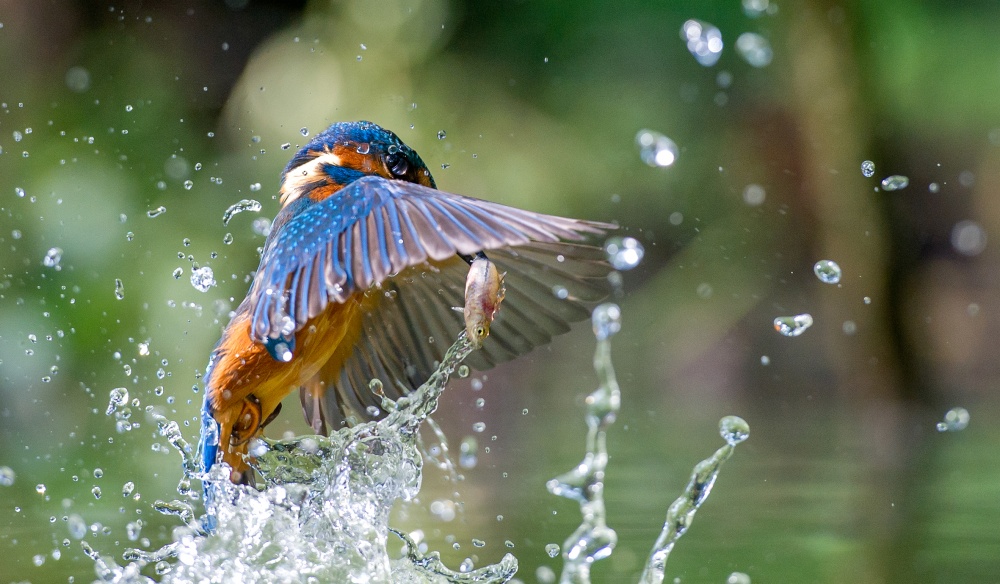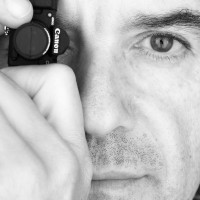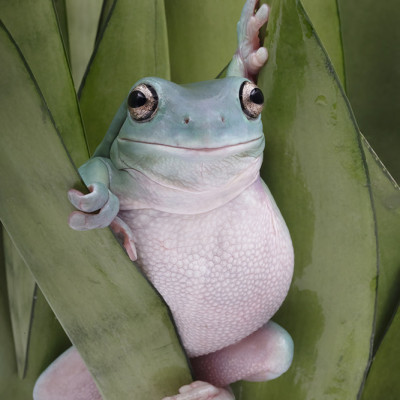by Max Rinaldi
Published the 25th of March 2021
Traveling around the world, I have had the chance to admire a myriad of different species, but I have to say that the common kingfisher remains, for me, one of the best. So, three years ago I began to devote much of my time to obtaining dynamic photographs of them.

Nikon D3s . Nikkor 70-200mm f/2.8 . f/4
I believe that kingfishers are one the most coveted nature subjects by beginning photographers. We see many pictures of kingfishers on the web and in magazines. They are very common throughout Europe and around the world, and there are many different subspecies of spectacular colors.In terms of my own personal taste, I have always preferred dynamic photos where you can admire those subtle moments that only Mother Nature can offer us and that the human eye cannot grasp. Well, thanks to the new technologies of the digital age, high ISO sensitivities permit dynamic shots at high shutter speeds to freeze moments like this without having to use a flash.
"The construction of a fixed hide is the best way to make that happen. That's why I decided to build one on the edge of a pond often visited by a female kingfisher where she also had a nearby nest."
This little bird is very suspicious, extremely sensitive to changes in its habitat and highly territorial. For those reasons, the best way to approach and photograph the kingfisher is to ensure that it becomes comfortable with any new elements in its environment and recognizes them as normal. The construction of a fixed hide is the best way to make that happen. That's why I decided to build one on the edge of a pond often visited by a female kingfisher where she also had a nearby nest. The fact that it was next to a main river made it a perfect location because even in the winter months when the pond is frozen, this kingfisher did not abandon her territory and continued to fish in the river.I spent a lot of time observing this bird before deciding where to build the hide, and while doing so I noticed that she always dove into the water at a precise point. Luckily for me, that was also one of the few spots near the bank of the pond where there was enough space to build my hide. I made a very simple structure out of wooden beams and camouflage cellophane netting and opened two holes: one in the center to photograph the kingfisher on a perch and one at ground level to take photos of her entry and exit from the water. The materials used to build the hide were green to blend into the surrounding woodland. Then I inserted a perch in the pond, close to the bank and with enough height to allow her to observe the water below. This was a very tricky job, and it took several attempts and a lot of experimentation, changing the distance, height and position with respect to the sun, in order to find the right combination.
"Personally I hate the use of flash with diurnal animals. However, it is still necessary to have a very fast shutter speed to freeze such a rapid bird in a dynamic pose."
This picture was captured on August 12, 2014, at 4:00 p.m. while the bird was fishing. The hour and weather did not provide perfect lighting, but that was my personal challenge : man vs. light. Personally I hate the use of flash with diurnal animals. However, it is still necessary to have a very fast shutter speed to freeze such a rapid bird in a dynamic pose.I placed my Nikon D3s with the Nikkor 70-200 f/2.8 lens at ground level. To do this I dug a hole about 4 inches (10 cm) in diameter, and in the hole I planted a threaded iron bar onto which I had screwed a Manfrotto ball head. The camera and telephoto lens were secured to the ball head and perfectly aligned with the ground and water level.To ensure correct focus, I placed a temporary target made out of a sheet of Styrofoam in the water at the point where the bird usually dove. I adjusted the manual focus on the target and locked it into the telephoto lens. This operation is indispensable since the kingfisher is lightning fast, and the autofocus is not able to catch it. Additionally, it often focuses on the splashing water and not on the bird. Focus must be very precise because the extremely shallow depth of field allows only 0.4 inches (1 cm) to get the bird in focus. I used an aperture of f/4.0, set the shutter speed to 1/4000 second and the ISO to 1600.
"The bird calculates the exact distance to its prey by making characteristic back-and-forth movements with its head."
I then removed the foam target and waited. After a few minutes the kingfisher arrived and began fishing. The bird calculates the exact distance to its prey by making characteristic back-and-forth movements with its head. When I saw that, I knew it would dive soon, so I started shooting. Of course, you also need a lot of luck to capture the right moment. The bird caught a total of 12 fish on that day, and I took 225 photos; this is the one I prefer : a really dynamic pose.
The post-processing was very simple. I used Adobe Camera Raw and Photoshop to make a few minor adjustments.

Original image

Final image
1) Know your subject.
2) Find the right location.
3) Do not disturb your subject.
I'm from Italy. My passion for photography dates back to when I was a child; I used to take pictures of the whole family with my father's old Pentax K1000. My real mania started when I bought my first DSLR, a Nikon D5100. Working in the field of technology, and with passion inspiring me to pursue sports and nature photography, I eventually acquired a pro body, the Nikon D3s.
My preference has always been dynamic photos where you can admire those subtle moments that the human eye cannot grasp.












